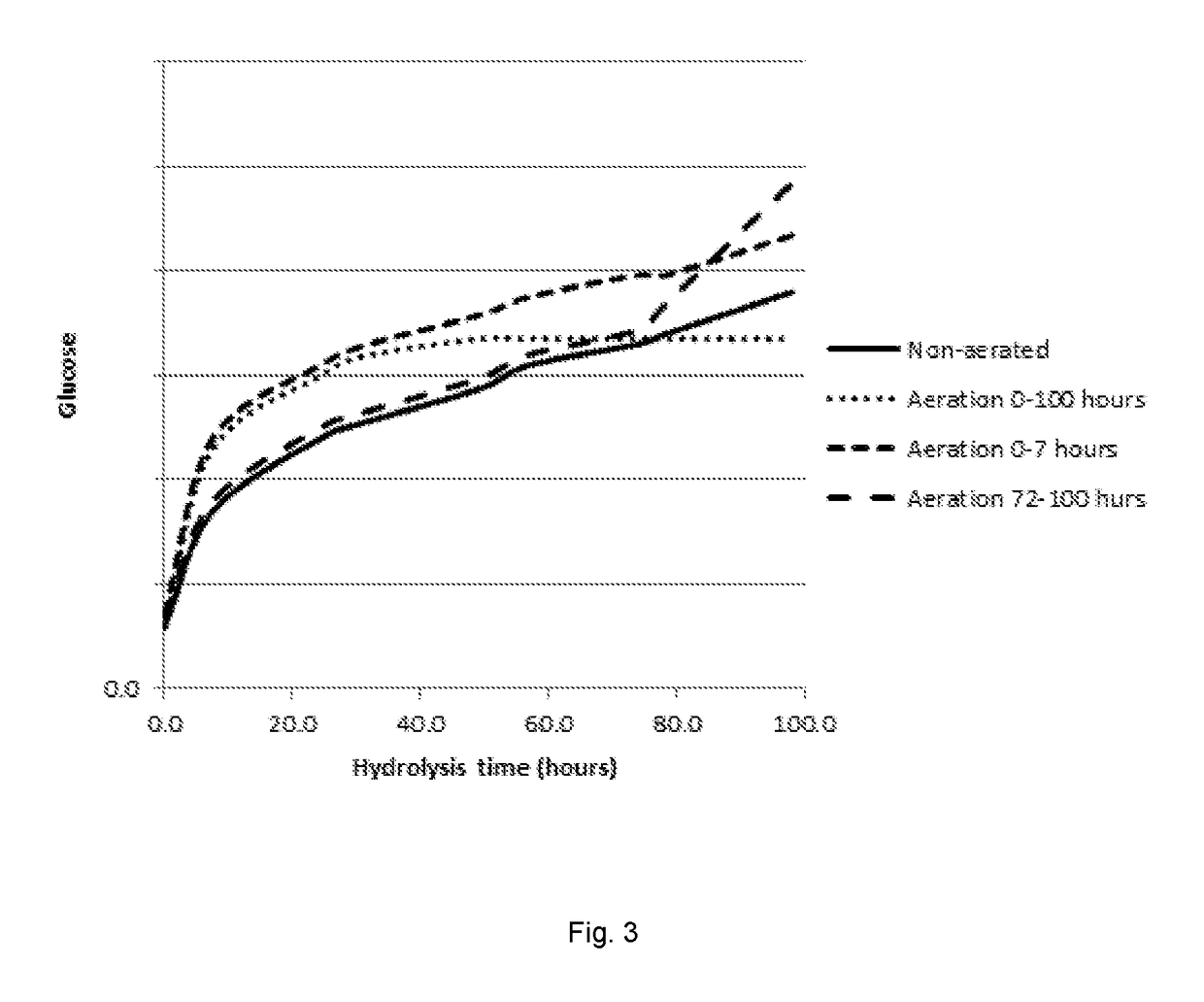Process and apparatus for enzymatic hydrolysis of lignocellulosic material and fermentation of sugars
a technology of lignocellulosic material and enzymatic hydrolysis, which is applied in the field of apparatus for enzymatic hydrolysis of lignocellulosic material and sugar fermentation, can solve the problems of feedstock to ethanol yield and investment, slow and incomplete conversion into reducing sugar, and reduce process time , the effect of reducing the dosage of enzymes
- Summary
- Abstract
- Description
- Claims
- Application Information
AI Technical Summary
Benefits of technology
Problems solved by technology
Method used
Image
Examples
examples
Experimental Information
Strains
[0239]Rasamsonia (Talaromyces) emersonii strain was deposited at CENTRAAL BUREAU VOOR SCHIMMELCULTURES, Uppsalalaan 8, P.O. Box 85167, NL-3508 AD Utrecht, The Netherlands in December 1964 having the Accession Number CBS 393.64. Other suitable strains can be equally used in the present examples to show the effect and advantages of the invention. For example TEC-101, TEC-147, TEC-192, TEC-201 or TEC-210 are suitable Rasamsonia strains which are described in WO 2011 / 000949.
Preparation of Acid Pre-Treated Corn Stover Substrate.
[0240]Dilute-acid pre-treated corn stover (aCS) was obtained as described in Schell, D. J., Applied Biochemistry and Biotechnology (2003), vol. 105-108, pp 69-85. A pilot scale pretreatment reactor was used operating at steady state conditions of 190° C., 1 min residence time and an effective H2SO4 acid concentration of 1.45% (w / w) in the liquid phase.
Protein Measurement Assays
TCA Biuret
[0241]The method was a combinat...
example calculation
glucose=60 g / l
glucan fraction=0.40 (is 40% on dry matter)
dm=200 g / kg
glucan conversion example=(60*100) / (0.4×200×1.1)=68% conversion
example 1
Evaluation of the Effect of the Absence of Oxygen During Hydrolysis on the Cellulolytic Activity of Cellulase Enzyme Cocktails
[0245]The effect of oxygen absence during hydrolysis on the cellulolytic activity of the enzyme cocktail was evaluated according to the procedures described below. The hydrolysis reactions were performed with acid pretreated cornstover (aCS) feedstock at a final concentration of 10 w / w % DM. This feedstock solution was prepared via the dilution of a concentrated feedstock solution with water. Subsequently the pH was adjusted to pH 4.5 with a 4M NaOH solution. The elimination of oxygen from the feedstock was accomplished in two steps. First, the feedstock solution was degassed via sonication under vacuum in a sonication bath (Bransonic 5510E-DTH, setting; Degas) for 15 minutes. In the second step, the oxygen was further removed by continuous sparging of a nitrogen flow through a 500 ml solution of the 10% DM feedstock for a period of 3 hours. Prior to being sp...
PUM
| Property | Measurement | Unit |
|---|---|---|
| volume | aaaaa | aaaaa |
| temperature | aaaaa | aaaaa |
| temperature | aaaaa | aaaaa |
Abstract
Description
Claims
Application Information
 Login to View More
Login to View More - R&D
- Intellectual Property
- Life Sciences
- Materials
- Tech Scout
- Unparalleled Data Quality
- Higher Quality Content
- 60% Fewer Hallucinations
Browse by: Latest US Patents, China's latest patents, Technical Efficacy Thesaurus, Application Domain, Technology Topic, Popular Technical Reports.
© 2025 PatSnap. All rights reserved.Legal|Privacy policy|Modern Slavery Act Transparency Statement|Sitemap|About US| Contact US: help@patsnap.com



